Last week I had the privilege of attending the premiere of the film “Powstanie Warszawskie” (Warsaw Uprising), accompanying Professor Witold Kieżun, a well-known Polish economist and participant in the Uprising.
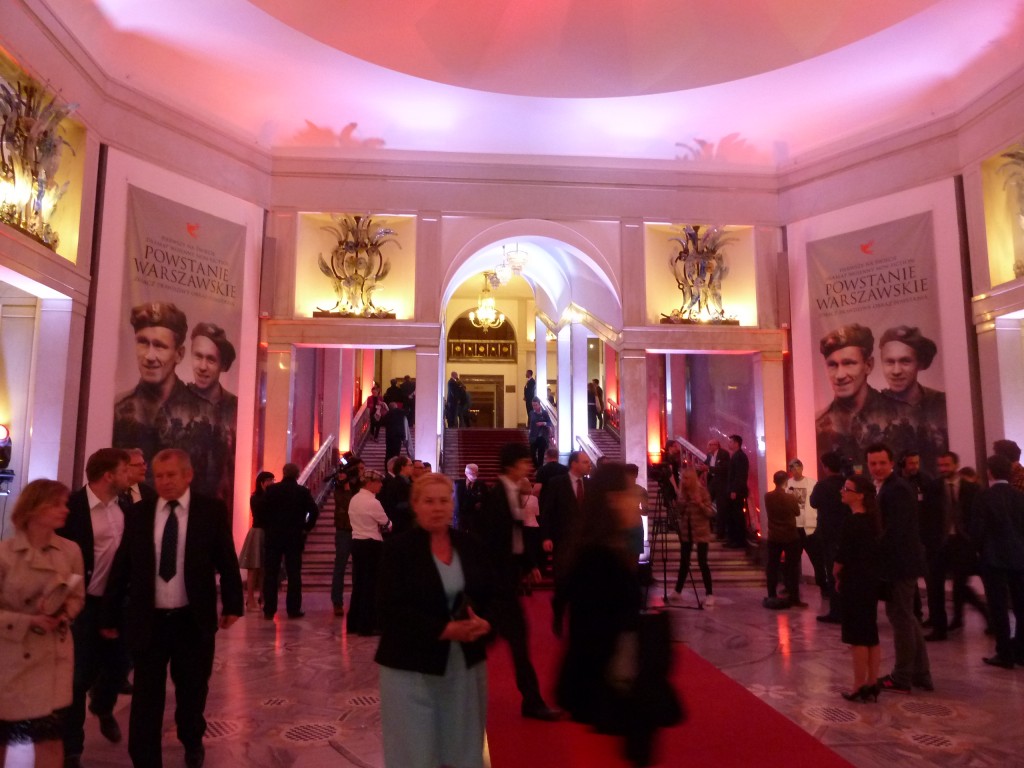 The film is a colorized and re-edited version of actual footage filmed and screened to audiences during the Warsaw Uprising in August and September, 1944. The modern-day creators of the film added sound and dialogue, joining the hundreds of short scenes into a cohesive narrative. The end result is a powerful and sobering view of one of the most dramatic episodes in modern history.
The text and dialogue in the trailer above speaks of the determination of two brothers to tell the story of Warsaw’s struggle.
The film is a colorized and re-edited version of actual footage filmed and screened to audiences during the Warsaw Uprising in August and September, 1944. The modern-day creators of the film added sound and dialogue, joining the hundreds of short scenes into a cohesive narrative. The end result is a powerful and sobering view of one of the most dramatic episodes in modern history.
The text and dialogue in the trailer above speaks of the determination of two brothers to tell the story of Warsaw’s struggle.
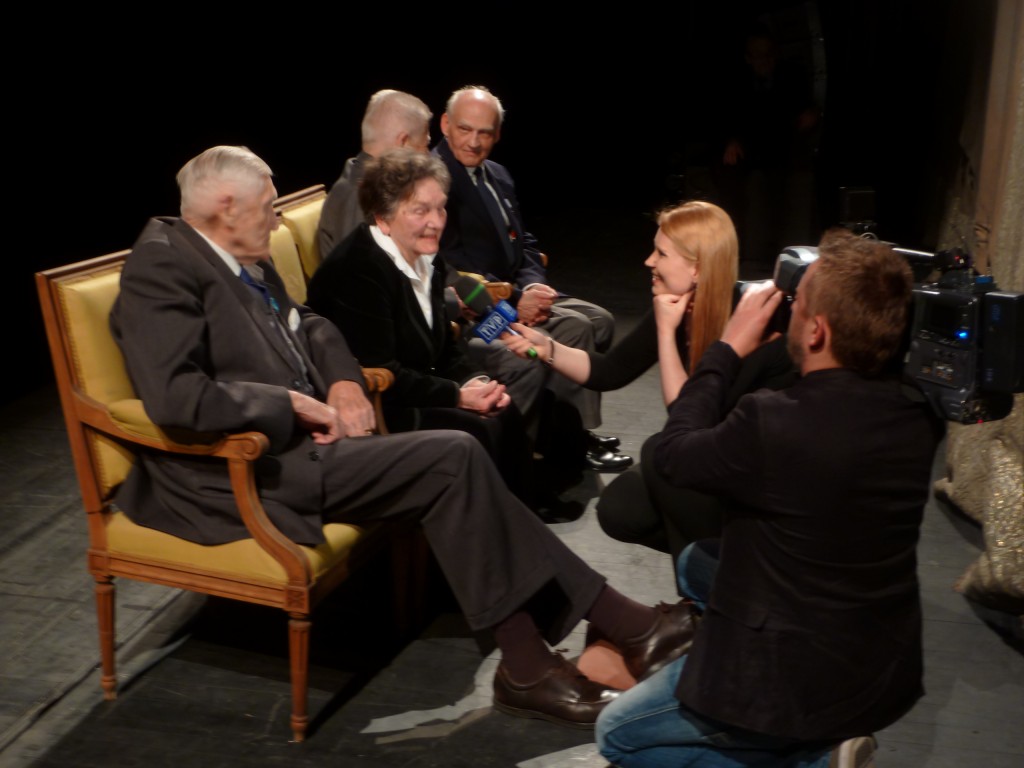 The premiere was held at the National Theatre in Warsaw. Among the many dozens of survivors and participants in the Warsaw Uprising in attendance were four of those identified in the film footage, including Professor Kieżun, who made a brief speech in advance of the screening. Nearly 2000 guests filled the totally full auditorium that Wednesday night.
The premiere was held at the National Theatre in Warsaw. Among the many dozens of survivors and participants in the Warsaw Uprising in attendance were four of those identified in the film footage, including Professor Kieżun, who made a brief speech in advance of the screening. Nearly 2000 guests filled the totally full auditorium that Wednesday night.
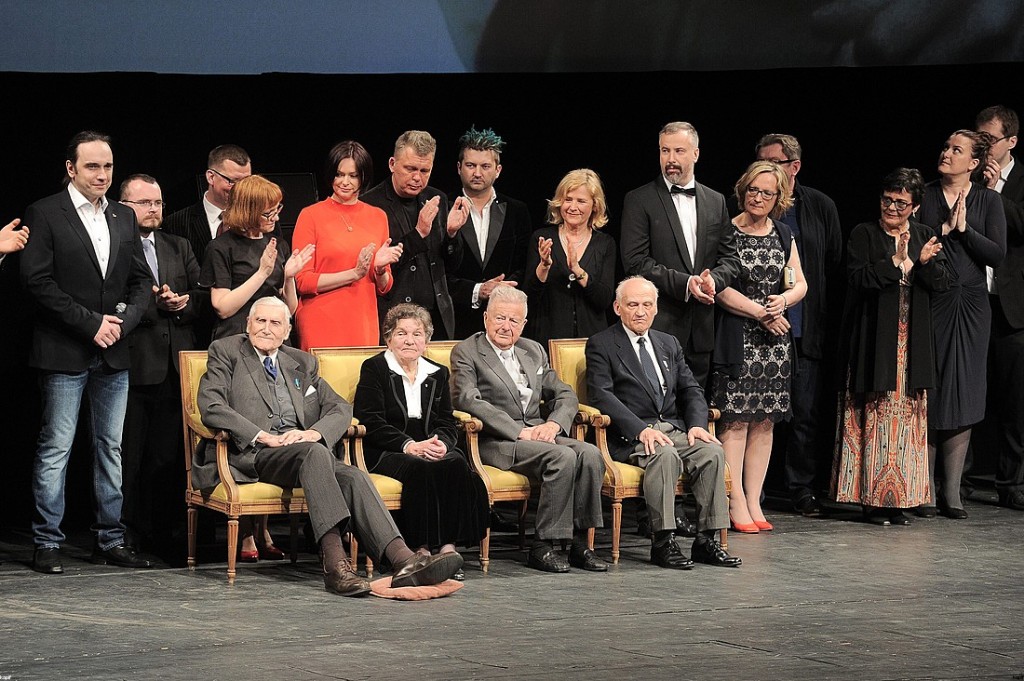 The creation of the film was a labor of love that lasted several years and included the selection, editing and colorization of nearly 90 minutes of footage, recording dialogue, recording sound effects and identifying hundreds of individuals in the film. The Warsaw Uprising Museum, the driving force behind the project, includes departments of history, oral history, education and imagery, all of which contributed to the realization of the film. Having met and befriended a number of the staff at the museum, I know how committed they are to their work and they deserve tremendous credit for what they achieved.
The creation of the film was a labor of love that lasted several years and included the selection, editing and colorization of nearly 90 minutes of footage, recording dialogue, recording sound effects and identifying hundreds of individuals in the film. The Warsaw Uprising Museum, the driving force behind the project, includes departments of history, oral history, education and imagery, all of which contributed to the realization of the film. Having met and befriended a number of the staff at the museum, I know how committed they are to their work and they deserve tremendous credit for what they achieved.
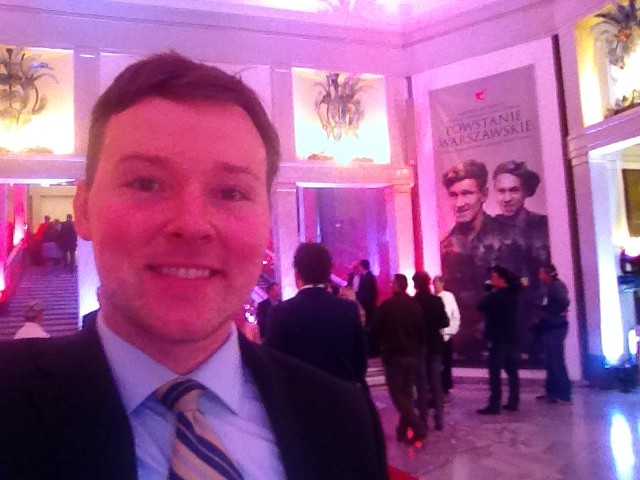 As part of my volunteer work at the museum in 2010, I used video software to clip individual scenes and frames from the original footage, which had been digitized. I noticed a number of these scenes in the film. Though only a tiny part of a massive project, it’s a privilege to have been part of the work in its earliest stages and then to have witnessed the finished product.
As part of my volunteer work at the museum in 2010, I used video software to clip individual scenes and frames from the original footage, which had been digitized. I noticed a number of these scenes in the film. Though only a tiny part of a massive project, it’s a privilege to have been part of the work in its earliest stages and then to have witnessed the finished product.
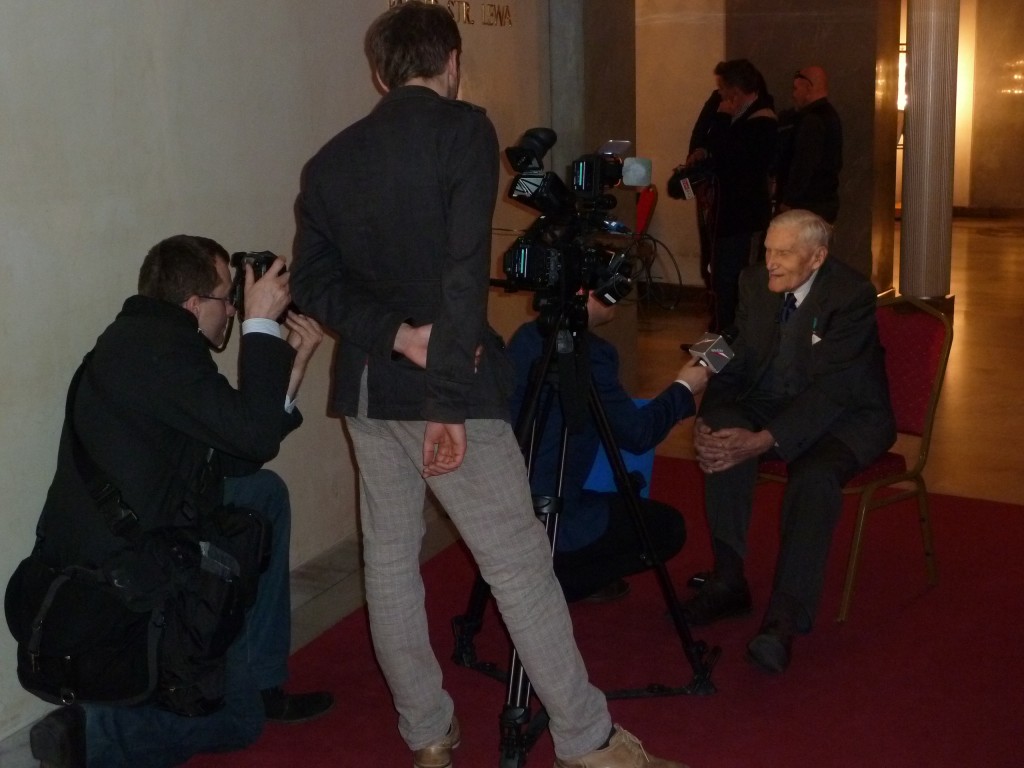 As a well-known Polish academic, a participant in the Uprising and the film, Professor Kieżun was highly sought after for interviews. Before the premier when I went to meet him at his home, he was already being interviewed for Polish television. The original plan to take a taxi to the National Theater was changed because the reporters wanted to continue their interview with the professor en route. I was a bit worried that Warsaw’s famous traffic “korki” (corks) would delay our arrival, but we made it with time to spare. After the premier the professor spent over an hour with reporters from television and radio programs.
As a well-known Polish academic, a participant in the Uprising and the film, Professor Kieżun was highly sought after for interviews. Before the premier when I went to meet him at his home, he was already being interviewed for Polish television. The original plan to take a taxi to the National Theater was changed because the reporters wanted to continue their interview with the professor en route. I was a bit worried that Warsaw’s famous traffic “korki” (corks) would delay our arrival, but we made it with time to spare. After the premier the professor spent over an hour with reporters from television and radio programs.
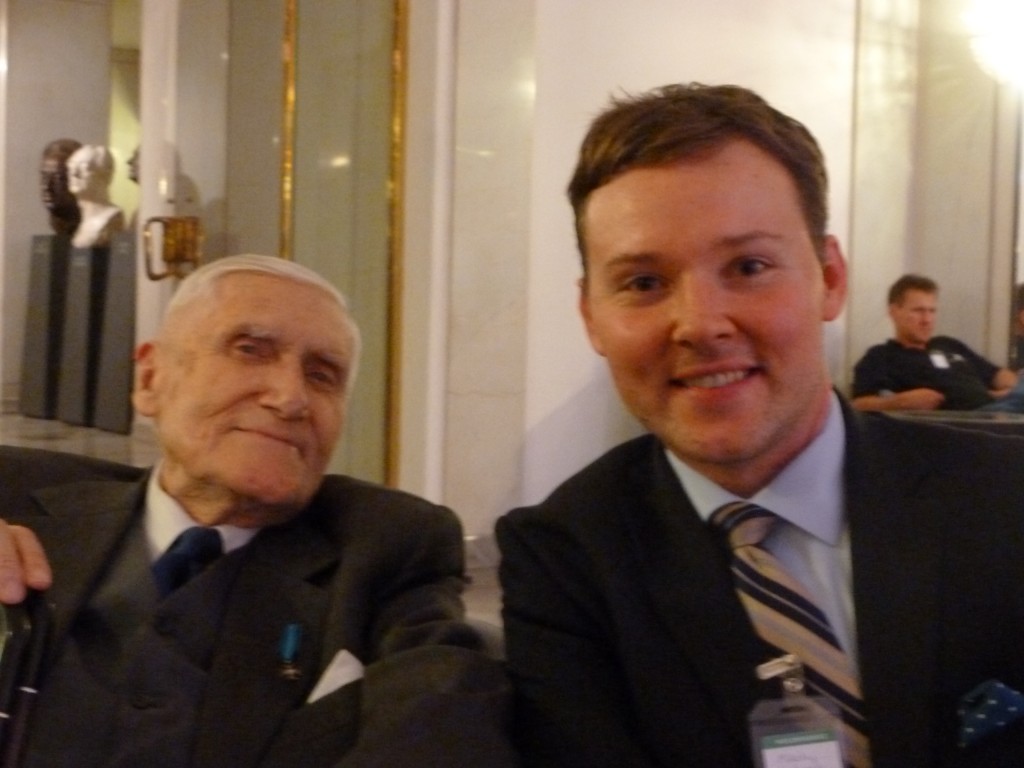 During the screening of the film I was seated next to Professor Kieżun. In the scene where he briefly appears, we both looked at each other, him with a knowing smile.
We often read history, occasionally we may be witness to it and sometimes, if we’re lucky, it’s sitting right next to us…
During the screening of the film I was seated next to Professor Kieżun. In the scene where he briefly appears, we both looked at each other, him with a knowing smile.
We often read history, occasionally we may be witness to it and sometimes, if we’re lucky, it’s sitting right next to us…
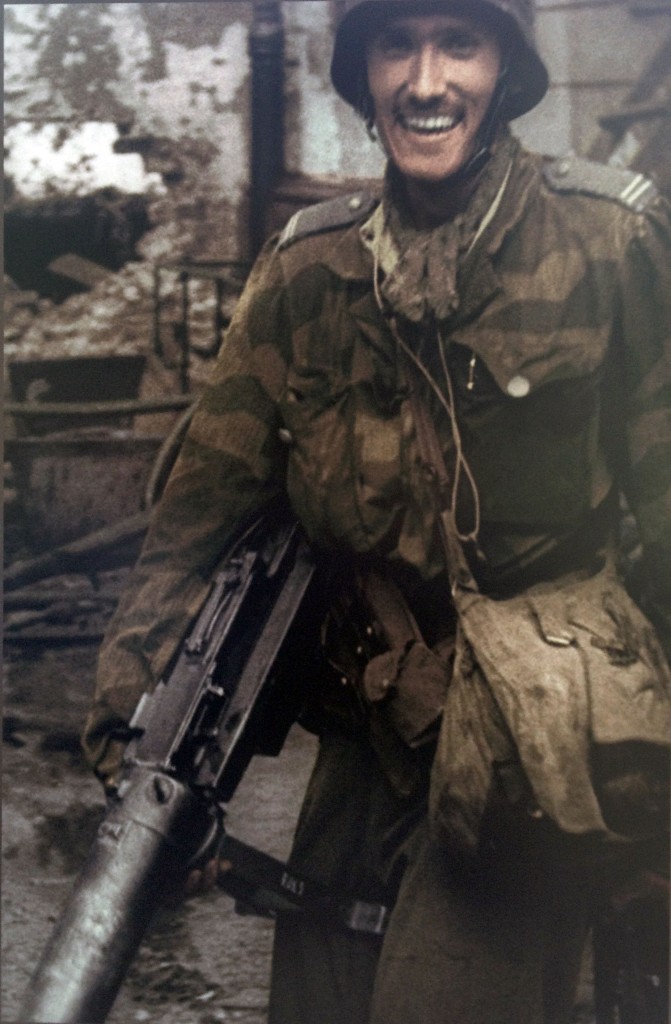
 The film is a colorized and re-edited version of actual footage filmed and screened to audiences during the Warsaw Uprising in August and September, 1944. The modern-day creators of the film added sound and dialogue, joining the hundreds of short scenes into a cohesive narrative. The end result is a powerful and sobering view of one of the most dramatic episodes in modern history.
The text and dialogue in the trailer above speaks of the determination of two brothers to tell the story of Warsaw’s struggle.
The film is a colorized and re-edited version of actual footage filmed and screened to audiences during the Warsaw Uprising in August and September, 1944. The modern-day creators of the film added sound and dialogue, joining the hundreds of short scenes into a cohesive narrative. The end result is a powerful and sobering view of one of the most dramatic episodes in modern history.
The text and dialogue in the trailer above speaks of the determination of two brothers to tell the story of Warsaw’s struggle.
 The premiere was held at the National Theatre in Warsaw. Among the many dozens of survivors and participants in the Warsaw Uprising in attendance were four of those identified in the film footage, including Professor Kieżun, who made a brief speech in advance of the screening. Nearly 2000 guests filled the totally full auditorium that Wednesday night.
The premiere was held at the National Theatre in Warsaw. Among the many dozens of survivors and participants in the Warsaw Uprising in attendance were four of those identified in the film footage, including Professor Kieżun, who made a brief speech in advance of the screening. Nearly 2000 guests filled the totally full auditorium that Wednesday night.
 The creation of the film was a labor of love that lasted several years and included the selection, editing and colorization of nearly 90 minutes of footage, recording dialogue, recording sound effects and identifying hundreds of individuals in the film. The Warsaw Uprising Museum, the driving force behind the project, includes departments of history, oral history, education and imagery, all of which contributed to the realization of the film. Having met and befriended a number of the staff at the museum, I know how committed they are to their work and they deserve tremendous credit for what they achieved.
The creation of the film was a labor of love that lasted several years and included the selection, editing and colorization of nearly 90 minutes of footage, recording dialogue, recording sound effects and identifying hundreds of individuals in the film. The Warsaw Uprising Museum, the driving force behind the project, includes departments of history, oral history, education and imagery, all of which contributed to the realization of the film. Having met and befriended a number of the staff at the museum, I know how committed they are to their work and they deserve tremendous credit for what they achieved.
 As part of my volunteer work at the museum in 2010, I used video software to clip individual scenes and frames from the original footage, which had been digitized. I noticed a number of these scenes in the film. Though only a tiny part of a massive project, it’s a privilege to have been part of the work in its earliest stages and then to have witnessed the finished product.
As part of my volunteer work at the museum in 2010, I used video software to clip individual scenes and frames from the original footage, which had been digitized. I noticed a number of these scenes in the film. Though only a tiny part of a massive project, it’s a privilege to have been part of the work in its earliest stages and then to have witnessed the finished product.
 As a well-known Polish academic, a participant in the Uprising and the film, Professor Kieżun was highly sought after for interviews. Before the premier when I went to meet him at his home, he was already being interviewed for Polish television. The original plan to take a taxi to the National Theater was changed because the reporters wanted to continue their interview with the professor en route. I was a bit worried that Warsaw’s famous traffic “korki” (corks) would delay our arrival, but we made it with time to spare. After the premier the professor spent over an hour with reporters from television and radio programs.
As a well-known Polish academic, a participant in the Uprising and the film, Professor Kieżun was highly sought after for interviews. Before the premier when I went to meet him at his home, he was already being interviewed for Polish television. The original plan to take a taxi to the National Theater was changed because the reporters wanted to continue their interview with the professor en route. I was a bit worried that Warsaw’s famous traffic “korki” (corks) would delay our arrival, but we made it with time to spare. After the premier the professor spent over an hour with reporters from television and radio programs.
 During the screening of the film I was seated next to Professor Kieżun. In the scene where he briefly appears, we both looked at each other, him with a knowing smile.
We often read history, occasionally we may be witness to it and sometimes, if we’re lucky, it’s sitting right next to us…
During the screening of the film I was seated next to Professor Kieżun. In the scene where he briefly appears, we both looked at each other, him with a knowing smile.
We often read history, occasionally we may be witness to it and sometimes, if we’re lucky, it’s sitting right next to us…
